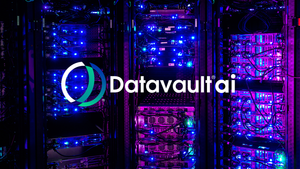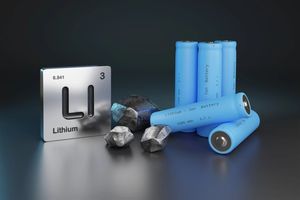
The global silver market is currently experiencing a profound and persistent structural supply deficit, a phenomenon now stretching into its fifth consecutive year. This critical imbalance, where the demand for the precious metal consistently outstrips its available supply, is largely driven by the burgeoning demands of the rapidly expanding green energy sector. From the solar panels adorning rooftops to the electric vehicles silently cruising our streets, the insatiable appetite for silver in these clean technologies is pushing prices to "explosive" new highs, signaling a significant shift in the metal's market dynamics and its role in the global economy.
This sustained shortfall, amounting to nearly 800 million ounces over the past half-decade – roughly equivalent to an entire year's global production – indicates a fundamental recalibration of the silver market. As industries globally pivot towards decarbonization, the indispensable role of silver in technologies vital for this transition is becoming increasingly apparent. This escalating demand, coupled with constrained supply, is not merely causing price fluctuations but is fundamentally reshaping silver's identity from primarily a precious metal to a critical industrial commodity, with profound implications for investors, manufacturers, and the broader green energy transition.
The Confluence of Green Demand and Dwindling Supply
The current silver supply squeeze is a complex narrative woven from two primary threads: a deepening structural deficit in mine output and an unprecedented surge in industrial demand, particularly from the green economy. Global mine production peaked around 2016 and has since seen a steady decline, hampered by deteriorating ore grades, limited exploration investment during previous bear markets, and lengthy development timelines for new projects. A significant portion of silver is also extracted as a by-product of other metals like copper, lead, and zinc, making its supply inelastic to its own price signals – even if silver prices soar, miners won't necessarily increase silver output unless the primary metal's demand warrants it.
This constrained supply side is meeting an accelerating wave of demand from the green energy revolution. Silver's unmatched electrical and thermal conductivity, reflectivity, and ductility make it indispensable in various clean energy applications. The solar photovoltaic (PV) industry is the single largest and fastest-growing category of silver consumption, with demand surging from 60 million ounces in 2015 to over 230 million ounces annually. Each gigawatt of solar capacity requires approximately 20-25 tons of silver, and with global solar capacity projected to triple by 2030, the demand from this sector alone is set to soar. Similarly, electric vehicles (EVs) utilize significantly more silver than their conventional counterparts, with 25-50 grams per EV compared to 15-25 grams in traditional cars. This increased usage is vital for battery management systems, power electronics, and charging components. As global EV sales are forecast to exceed 30 million units by 2030, automotive silver demand is expected to double. The cumulative effect of these trends has led to substantial drawdowns in above-ground inventories, with COMEX registered silver inventories declining by over 70% from their 2020 peak, pushing industrial stockpiles to minimal working levels. This tight market, combined with robust industrial purchasing, has seen silver prices rally significantly, reaching highs of $41-$42 per ounce in mid-September 2025, a level not seen since 2010.
Green Giants and Industrial Miners: Identifying the Winners and Losers
The ongoing silver supply squeeze creates a distinct set of winners and losers across various industries. On the winning side are primarily silver mining companies that can increase or maintain production amidst rising prices. Companies like Pan American Silver (NASDAQ: PAAS), Fresnillo PLC (LSE: FRES), and Hecla Mining Company (NYSE: HL) stand to benefit significantly from elevated silver prices, as their revenues and profit margins would expand. Miners with strong exploration pipelines or those focused on primary silver production, rather than just by-product, may see particular advantages. Additionally, companies involved in silver recycling and recovery technologies could see increased investment and demand for their services as industries seek alternative sources to bridge the supply gap.
On the other hand, a rising silver price presents significant challenges for manufacturers in the green energy sector that rely heavily on silver as a critical component. While demand for solar panels and EVs is booming, the increased cost of silver can erode profit margins for companies like First Solar (NASDAQ: FSLR), Enphase Energy (NASDAQ: ENPH), and major electric vehicle manufacturers (NASDAQ: TSLA) unless they can effectively pass on these costs to consumers or find innovative ways to reduce silver content. This could put pressure on their competitive positioning and potentially slow the pace of green energy adoption if the cost becomes prohibitive. Industries like photography, jewelry, and silverware manufacturers might also face increased input costs, although their demand for silver is less elastic compared to high-tech industrial uses. Ultimately, companies that have secured long-term supply agreements or possess technological advantages in reducing silver usage will be better positioned to navigate this challenging market.
Broader Implications and Industry Ripples
The silver supply squeeze is not an isolated event but a potent indicator of broader shifts within the global economy, particularly the accelerating transition to green energy. This event underscores the critical role of specific raw materials in enabling this transition, highlighting potential bottlenecks and supply chain vulnerabilities. The soaring demand for silver fits squarely within the broader trend of rising commodity prices for "transition minerals" – metals like copper, lithium, nickel, and rare earths – all essential for electrification and decarbonization. This squeeze could prompt other industries reliant on critical minerals to proactively secure their supply chains and invest in domestic mining or recycling capabilities, reducing reliance on volatile global markets.
The ripple effects extend beyond direct users of silver. Competitors in the green energy space might find themselves in a race to innovate, either by developing silver-reducing technologies or by finding alternative materials. This could spur significant R&D investment and potentially lead to breakthroughs that decrease the silver intensity of solar cells or EV components. Regulators and policymakers, recognizing silver's strategic importance, may begin to classify it as a "critical mineral," potentially leading to government stockpiling, investment incentives for mining, or even export restrictions to secure domestic supply. Historically, similar supply shocks in commodities like rare earths have led to geopolitical tensions and shifts in industrial policy. The current silver situation could serve as a precursor for how nations manage the increasingly complex interplay between environmental goals, economic competitiveness, and resource security in the coming decades.
What Comes Next: Innovation, Policy, and Market Volatility
In the short term, the market is likely to witness continued price volatility for silver, driven by the persistent supply-demand imbalance and speculative interest. Industrial users will intensify efforts to secure long-term supply contracts and explore hedging strategies to mitigate price risks. This could lead to a further tightening of the physical market as major players build strategic inventories. In the long term, the structural deficit is expected to prompt significant innovation. Research and development into alternative materials or technologies that reduce silver content in solar cells and EVs will accelerate. For instance, companies are already exploring copper-based alternatives for certain solar panel components, though silver's superior conductivity remains a challenge to match.
Strategically, mining companies may be incentivized to fast-track new projects or expand existing operations, but given the 7-10 year development timelines, significant new supply will not come online quickly. This creates a challenging outlook where demand continues to outpace supply for the foreseeable future. Governments, recognizing the strategic importance of silver for their green agendas, may implement policies to support domestic mining, recycling, and R&D. We could see increased collaboration between industry, academia, and government to develop sustainable supply chains for critical minerals like silver. For investors, this environment presents both opportunities and challenges. While the bullish case for silver prices remains strong, the market will require careful monitoring of technological advancements, policy shifts, and global economic conditions. The potential for a "silver market squeeze," akin to a short squeeze but driven by physical scarcity, remains a distinct scenario as inventories dwindle.
A New Era for Silver: Critical to the Green Future
The ongoing structural supply deficit in the global silver market, fueled by the relentless demand from the green energy sector, marks a definitive turning point for the metal. Silver is no longer merely a store of value or a precious metal; it is rapidly solidifying its identity as a critical industrial commodity, indispensable for the world's transition to a sustainable future. The "explosive" price performance witnessed recently is a direct consequence of this fundamental imbalance, driven by the millions of solar panels that require its superior conductivity and the burgeoning fleet of electric vehicles that rely on its robust performance in their intricate electronics.
Looking forward, the market will likely remain characterized by heightened volatility and a strong upward bias in silver prices as demand continues to outstrip supply. Investors should closely watch developments in both the mining sector, particularly any new discoveries or production expansions, and the technological advancements in green energy that aim to reduce silver consumption. The commitment to decarbonization by global economies ensures that silver's role as a linchpin of the green revolution will only grow, cementing its status as one of the most strategically important metals of the 21st century. This confluence of factors makes silver a fascinating, and potentially lucrative, market to observe in the coming months and years.






